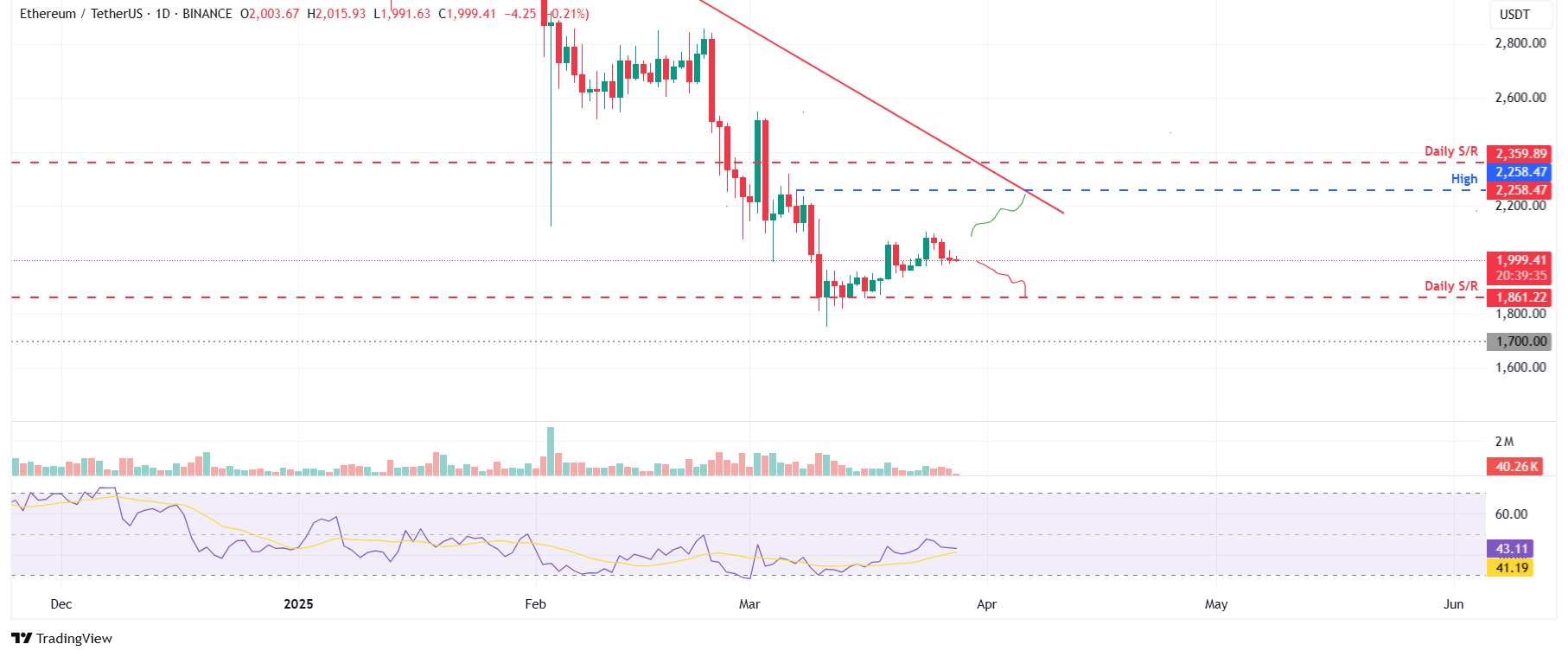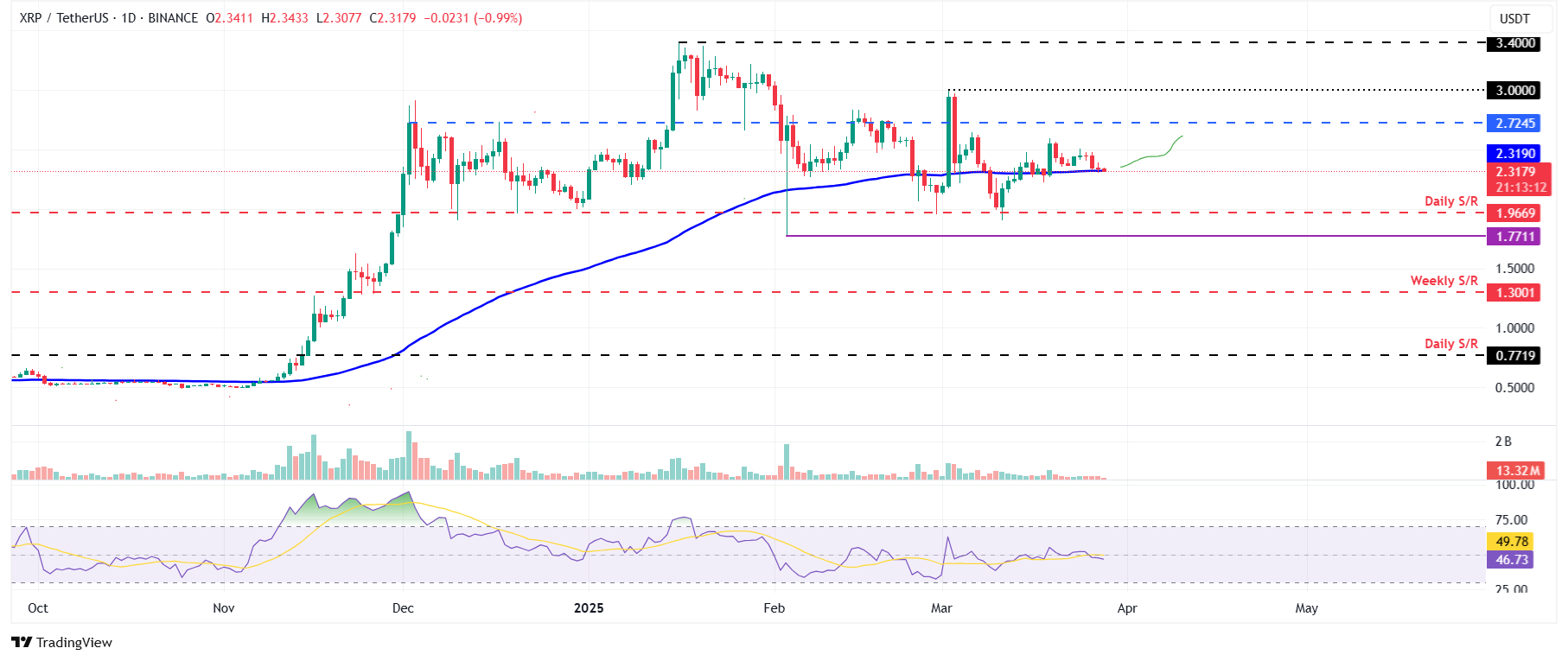- Bitcoin’s price remains steady around $87,000 on Friday; RSI suggests uncertainty among traders.
- Ethereum’s price sits at approximately $2,000 after a 3.73% decline over the past three days.
- XRP is retesting its 100-day EMA at $2.31; a decisive close below this level could signal further declines.
Bitcoin’s price (BTC) is stabilizing at roughly $87,000 on Friday, with its RSI pointing to a lack of conviction among traders. Meanwhile, Ethereum (ETH) and Ripple (XRP) are showing signs of weakness as they encounter resistance at critical price levels, resulting in a pullback this week.
Bitcoin’s RSI remains flat, indicating uncertainty among traders
The price of Bitcoin broke above its 200-day Exponential Moving Average (EMA) at about $85,580 on Sunday, gaining 4.45% by Monday. Over the subsequent days, BTC found stability around $87,000 and received support near the 200-day EMA. As of Friday, it remains at $87,000, just under its descending trendline established by connecting various high points since mid-January.
If the 200-day EMA acts as support and BTC manages to break and close above the descending trendline, it could pave the way for a recovery to retest the significant psychological level of $90,000. A strong close above this threshold may trigger further rallies toward the March 2 peak of $95,000.
The RSI on the daily chart stands at 51, hovering around its neutral level of 50 since Monday, reflecting indecision among traders. For bullish momentum to hold, the RSI needs to trend upward and rise above the neutral level of 50.
BTC/USDT daily chart
Nonetheless, if BTC encounters resistance at the descending trendline and closes below the 200-day EMA, it may decline further, testing the next support level at $78,258.
Ethereum displays signs of weakness
Ethereum’s price found support near $1,861 over the last two weeks, recovering nearly 7% the previous week. ETH continued its upward trajectory on Monday before closing above $2,081. However, it has faced a correction of nearly 4% across three consecutive days. As of Friday, it is trading below the $2,000 mark.
If ETH continues to decline, it could revisit its daily support at $1,861.
The RSI on the daily chart is at 43, having been rejected from its neutral level of 50 on Monday, indicating bearish momentum.

ETH/USDT daily chart
On the flip side, if it manages to recover, it could aim to retest its March 7 high of $2,258.
Ripple price may face a downturn if it closes below its 100-day EMA
Ripple’s price surpassed its 100-day EMA at $2.32 last week, climbing nearly 7%. However, XRP saw a pullback on Tuesday, decreasing 5.74% by Thursday. At this time on Friday, it continues to dip, nearing its 100-day EMA of around $2.31.
If XRP cannot maintain support around the 100-day EMA and closes below it, further declines may bring it down to test its next support level at $1.96.
The RSI on the daily chart is at 46, having dropped below the neutral level of 50 earlier this week, signaling bearish momentum.

XRP/USDT daily chart
Conversely, if the 100-day EMA around $2.32 holds firm, it may help facilitate a recovery, allowing XRP to retest its next resistance level at $2.72.
Bitcoin, altcoins, stablecoins FAQs
Bitcoin is the largest cryptocurrency by market cap, designed to function as a form of currency. This type of payment is decentralized, meaning it doesn’t require control by any single entity, preventing the need for third-party involvement in transactions.
Altcoins refer to any cryptocurrency other than Bitcoin, with some considering Ethereum as an exception because it is closely tied to the two coins from which many others fork. If this perspective holds, Litecoin is viewed as the first altcoin, having originated from the Bitcoin protocol as an enhanced version.
Stablecoins are cryptocurrencies aimed at maintaining a stable price, with their value often linked to a reserve of the asset they represent. To achieve this, stablecoins are pegged to commodities or financial instruments, like the US Dollar (USD), with their supply managed by algorithms or demand. The primary purpose of stablecoins is to provide a reliable entry and exit point for investors interested in trading and investing in cryptocurrencies, as they also offer a means of storing value, given the general volatility of cryptocurrencies.
Bitcoin dominance reflects the ratio of Bitcoin’s market capitalization to the total market cap of all cryptocurrencies combined. It illustrates investor interest in Bitcoin. Elevated BTC dominance usually occurs before and during bullish trends, as investors seek security in established cryptocurrencies like Bitcoin. A decrease in BTC dominance often signals that investors are reallocating their funds into altcoins in search of greater returns, which typically sparks altcoin rallies.
